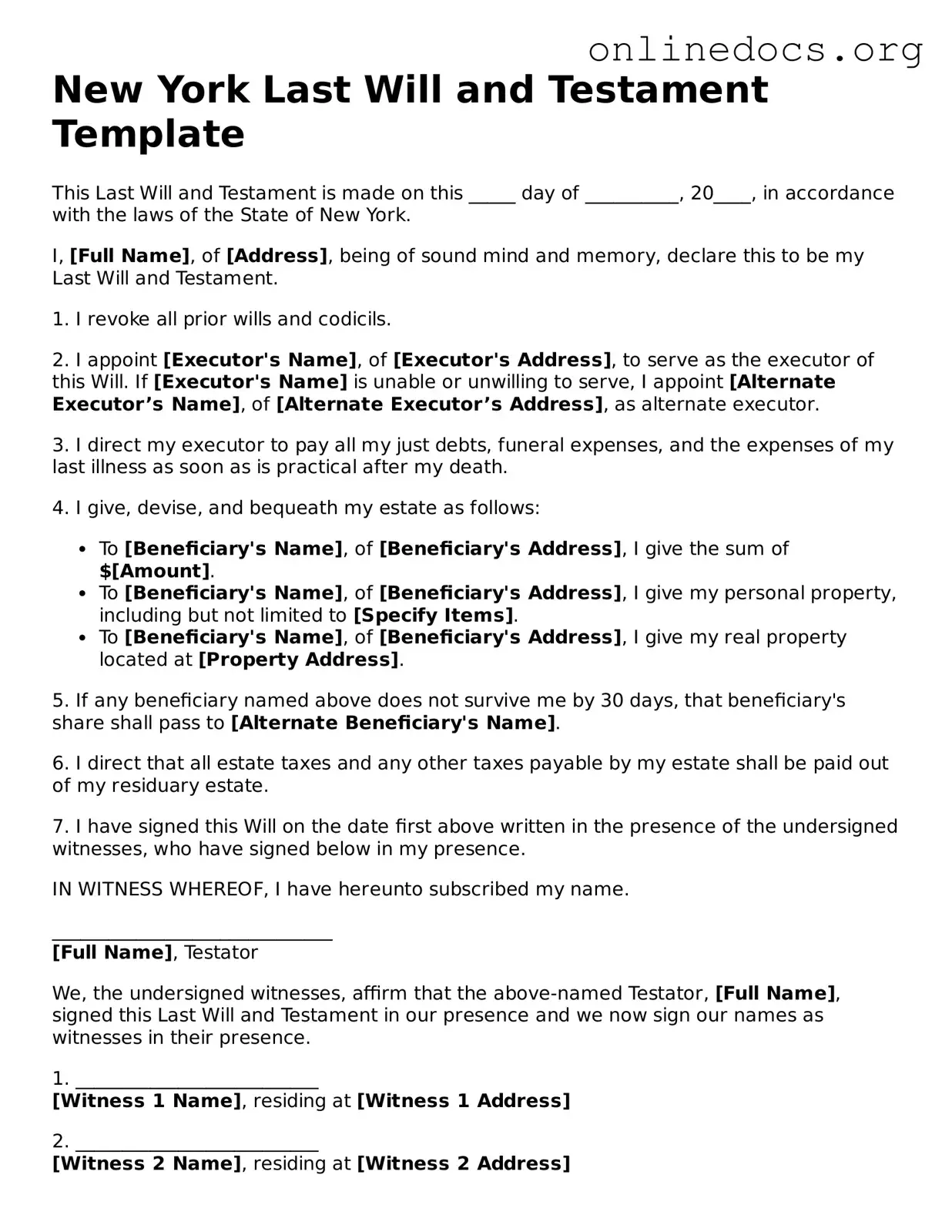The New York Last Will and Testament form shares similarities with a Living Will. A Living Will outlines an individual's preferences for medical treatment in case they become unable to communicate their wishes. While a Last Will deals with the distribution of assets after death, a Living Will focuses on healthcare decisions during one’s lifetime. Both documents reflect personal choices and ensure that an individual’s desires are respected, whether regarding property or health care.
Another document akin to the Last Will is the Trust. A Trust allows individuals to place their assets in a legal entity managed by a trustee for the benefit of designated beneficiaries. Like a Last Will, a Trust dictates how assets are distributed. However, a Trust can take effect during a person’s life, offering more flexibility in asset management and potentially avoiding probate, which is a common process for Last Wills.
The Power of Attorney (POA) is also similar to a Last Will. A POA grants someone the authority to make decisions on behalf of another person, particularly in financial or legal matters. While a Last Will only becomes effective after death, a POA is active during the individual’s life. Both documents empower individuals to ensure their wishes are carried out, whether in life or after passing.
Next, the Advance Healthcare Directive resembles a Last Will in that it provides guidance on personal wishes. This document combines elements of a Living Will and a Healthcare Proxy, allowing individuals to specify their medical treatment preferences and appoint someone to make decisions on their behalf. Both documents aim to uphold personal choices regarding health and well-being.
The Codicil is a document that modifies an existing Last Will. It allows individuals to make changes without drafting an entirely new will. Like a Last Will, a Codicil must meet specific legal requirements to be valid. This document is essential for those who want to update their estate plans without starting from scratch.
A Letter of Instruction can also be compared to a Last Will. This informal document provides guidance to loved ones about personal wishes, funeral arrangements, and asset distribution. While it does not hold legal weight like a Last Will, it can complement a will by offering clarity and additional context about an individual’s desires.
The Estate Plan is another related document. An Estate Plan encompasses a comprehensive strategy for managing an individual’s assets during their lifetime and after death. This plan typically includes a Last Will, Trusts, and other legal documents. It aims to ensure that an individual’s financial and personal wishes are fulfilled, much like a Last Will does for asset distribution.
A Guardianship Designation is also similar in purpose to a Last Will. This document appoints a guardian for minor children in the event of a parent’s death or incapacity. While a Last Will primarily addresses asset distribution, it can also include guardianship provisions. Both documents reflect an individual’s concern for their loved ones’ future.
The Prenuptial Agreement (or “prenup”) can be likened to a Last Will in terms of asset distribution. A prenup outlines how assets will be divided in the event of a divorce or separation. Although it is focused on marital relationships, both documents serve to clarify intentions regarding property and financial matters, ensuring that individuals’ wishes are honored.
For individuals seeking to enhance their applications, utilizing a comprehensive Recommendation Letter is essential. This form not only allows you to request insights into your achievements but also serves as a structured means of collecting vital feedback from references. To learn more about this document, visit the effective Recommendation Letter form guidelines.
Lastly, a Business Succession Plan shares similarities with a Last Will, particularly for business owners. This plan outlines how ownership and management of a business will transfer upon the owner’s death or retirement. Like a Last Will, it ensures that the individual’s wishes are respected and provides a clear roadmap for the future, safeguarding both the business and its employees.
